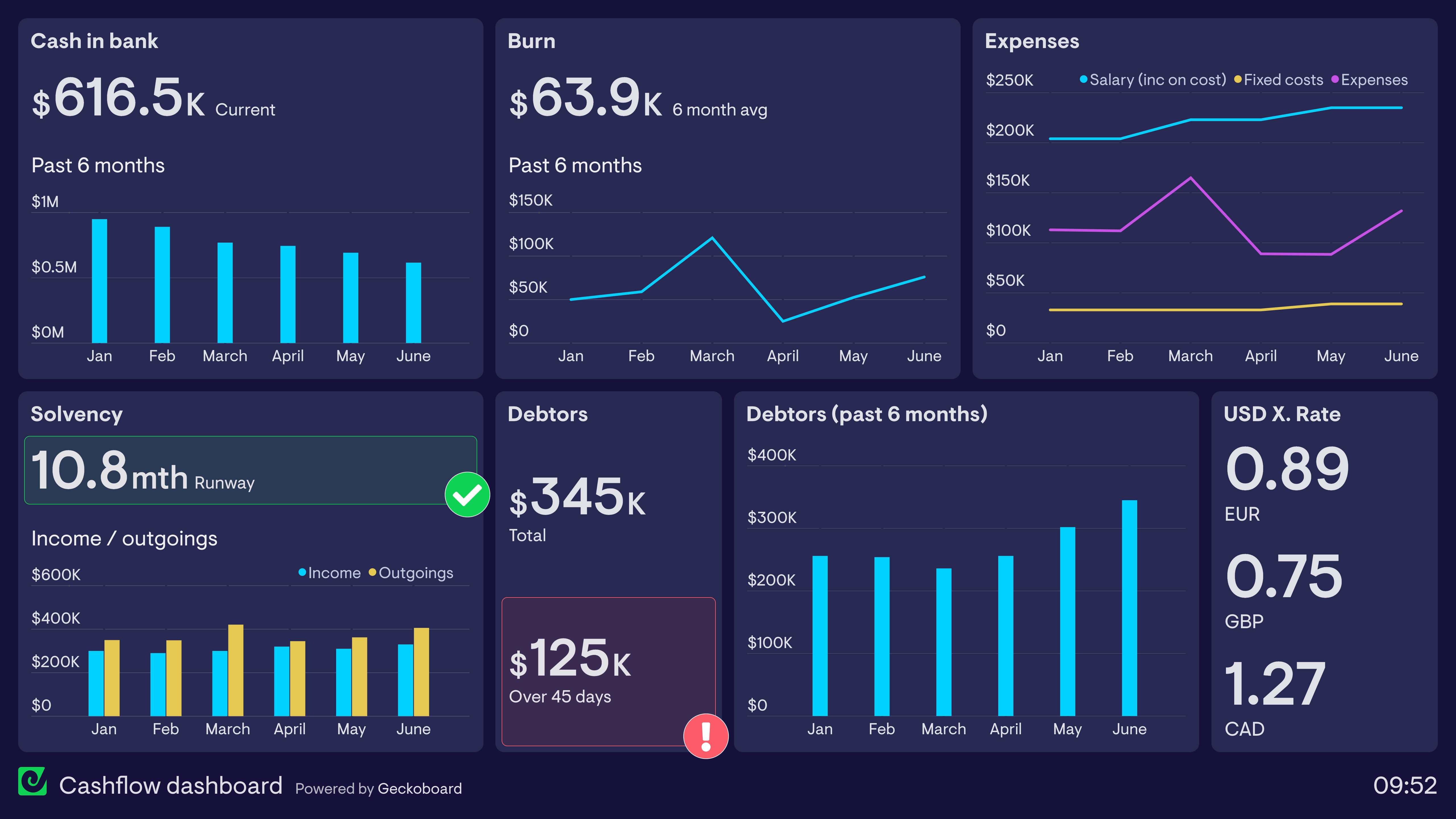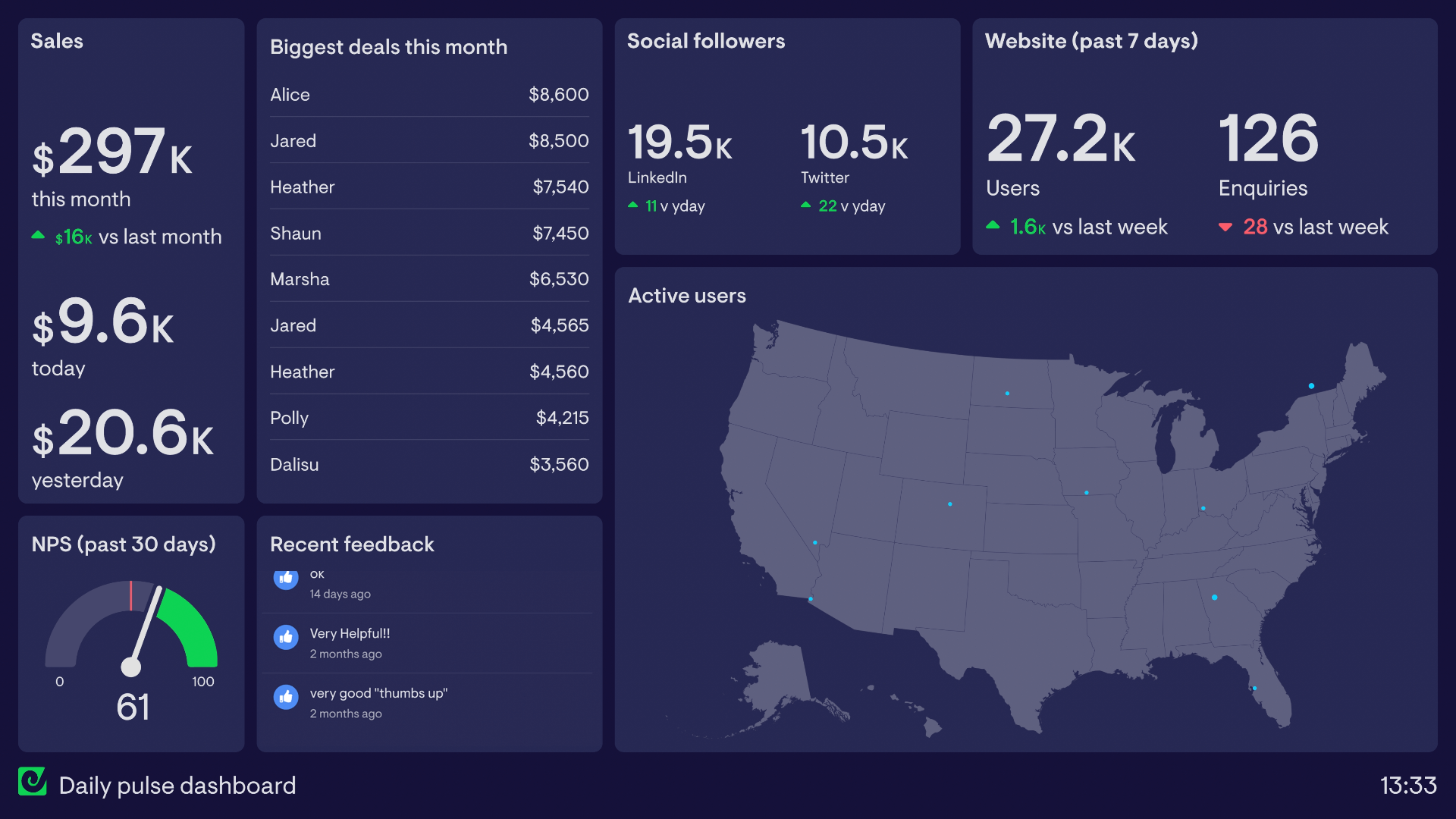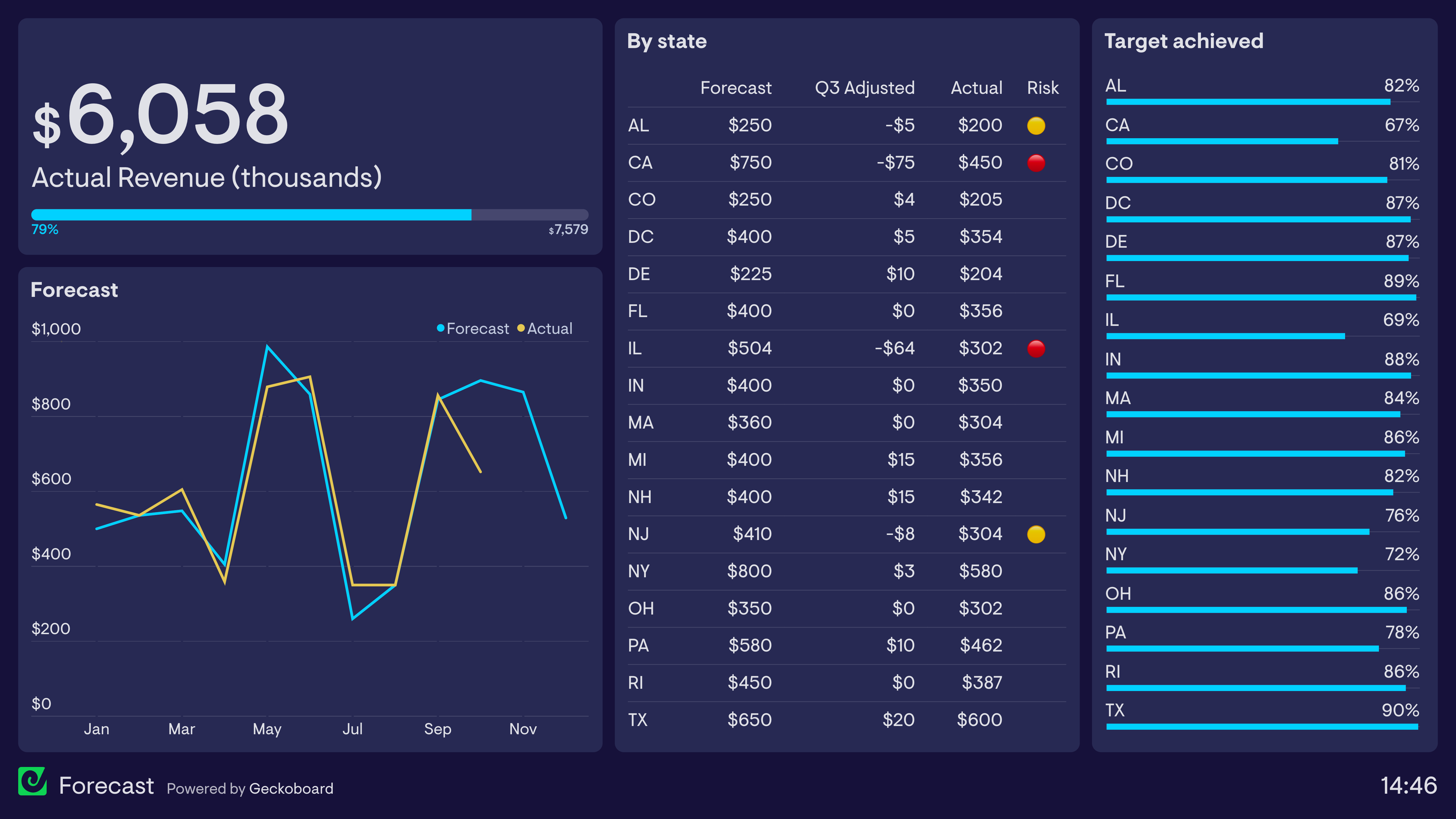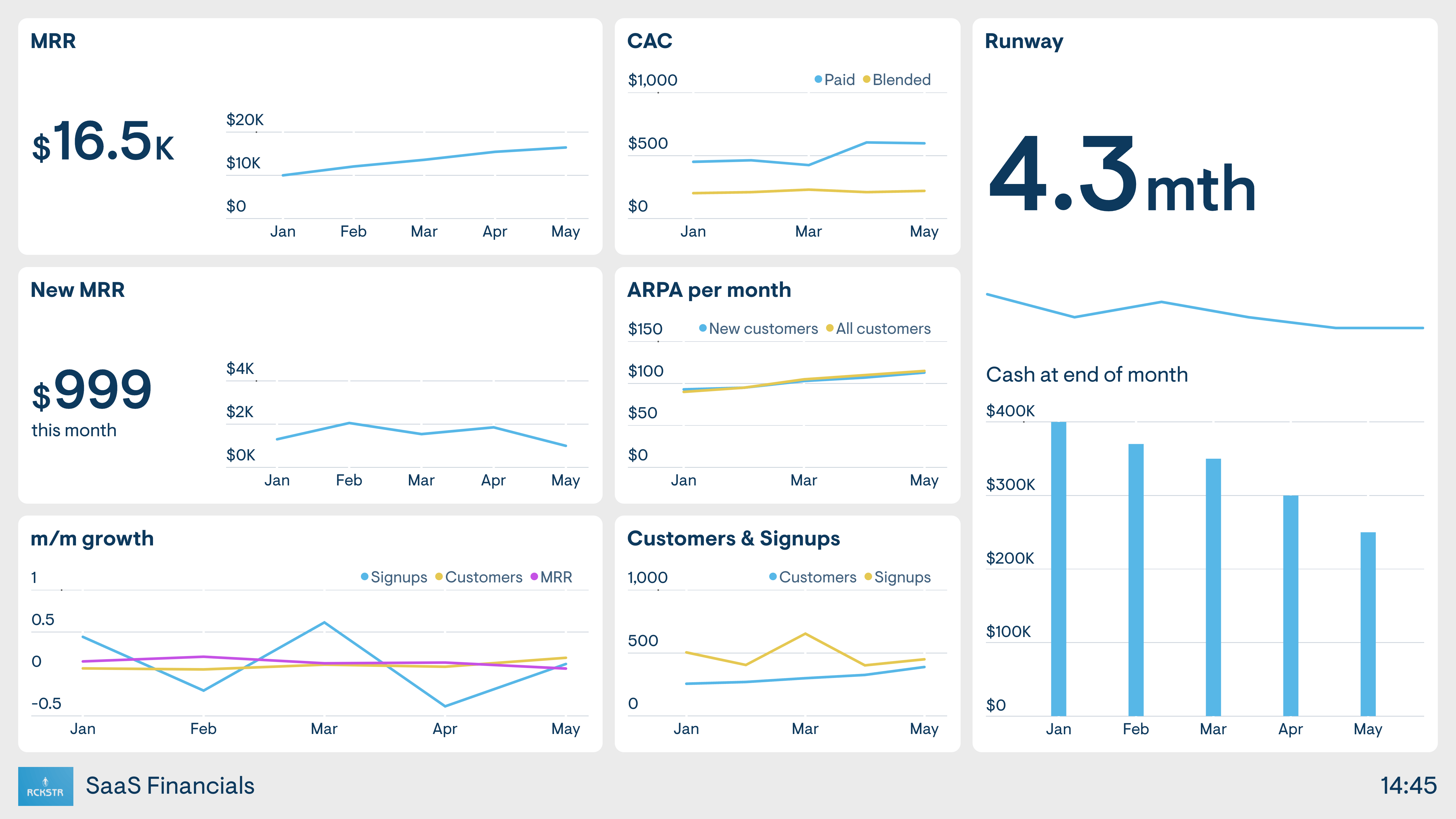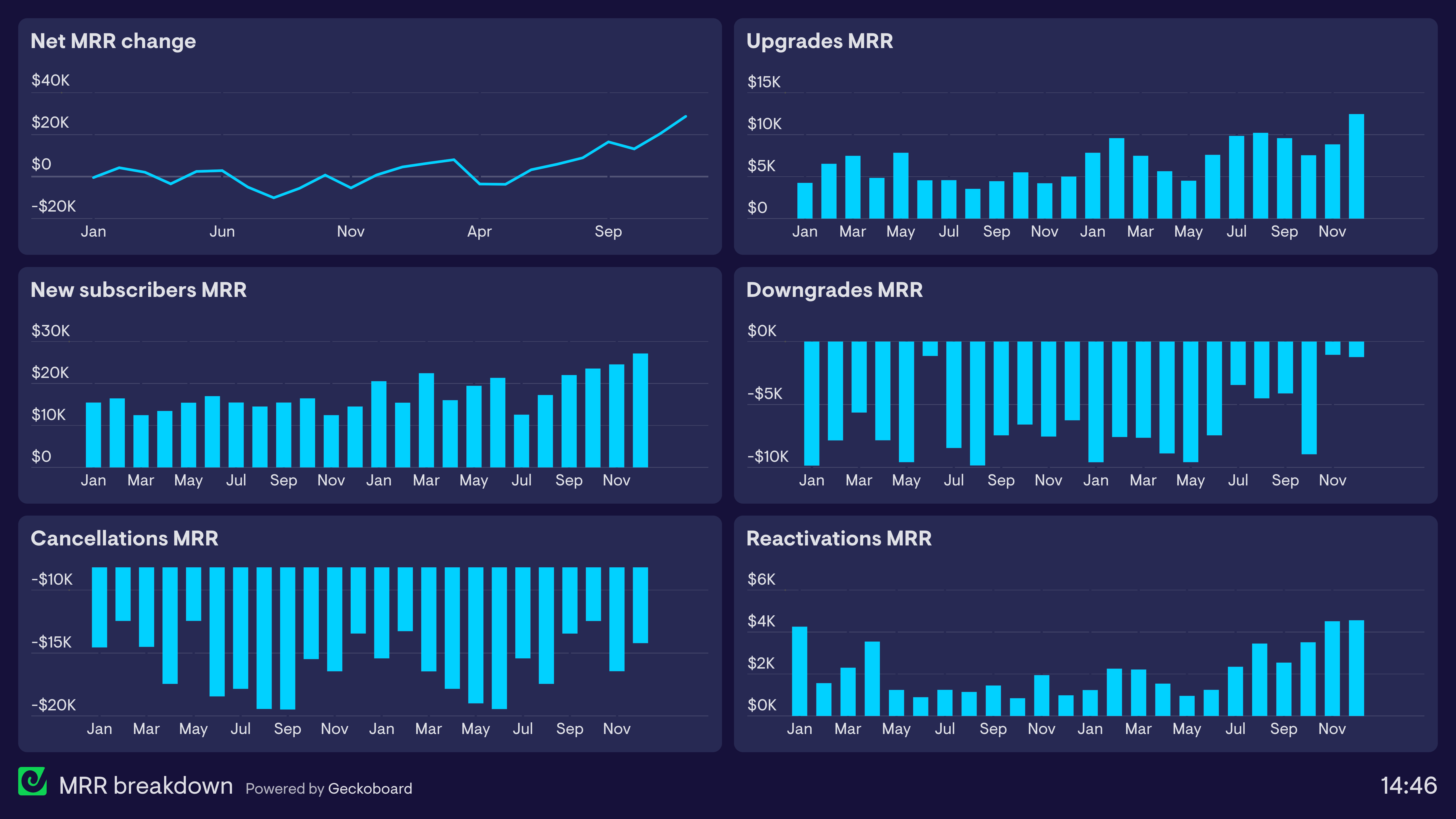What is a cash flow dashboard?
A cash flow dashboard specifically monitors a company’s immediate spending power and cash. Company Owners and Finance Directors need to track cash flow separately to revenue – that’s because the timing of income and expenditure means that revenue models do not always reflect a company’s immediate cash position.
Cash flow dashboard
This dashboard tracks several metrics related to cash flow. Firstly the user is tracking total cash in the bank and how this has changed over the past month. Sometimes, companies refer to the difference in cash month-to-month as the Burn Rate, which is also being tracked in the next section of the dashboard. Related to this is the Cash Runway which shows how long the company would be able to operate at its current Burn Rate. The dashboard user has also broken down expenses by type so they can better understand what contributes to expenses.
A significant portion of the dashboard is devoted to debtors. Having debtors is not necessarily a bad thing, and is common in industries which issue invoices. However, companies need to monitor, carefully, debts that have not been paid within the agreed terms, as there is always a risk debtors will not pay. That’s why this dashboard has created a status indicator for unpaid debts longer than 45 days. If this gets too high, the Finance Director will likely need to investigate.
Finally, because the company trades internationally, they have included current exchange rates against the US Dollar.
Focus area
Cash Runway, Burn Rate, debtors
Who looks at it?
Finance Director, CEO
How often?
Every week
- Stripe for SaaSSpreadsheetsProfitWellQuickBooks Online
